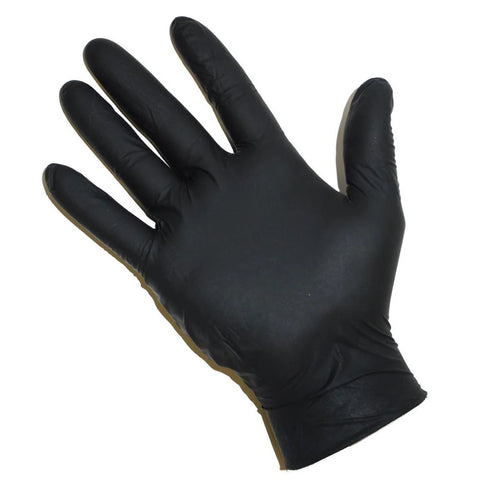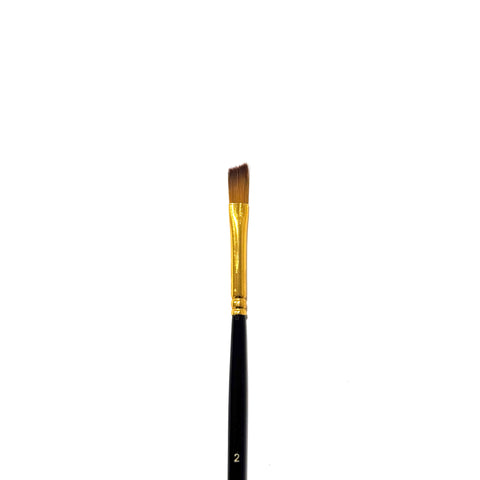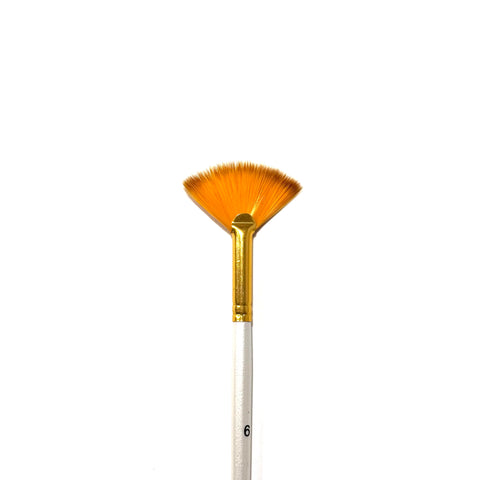
ფოსფორის საღებავი ფირუზისფერი (აკრილი) STUDIO ACRYLICS 100 ML PHOSPHORESCENT GEL TURQUOISE - Pebeo
Product description
Phosphorescent gels absorb natural or artificial light and re-emit it in the dark. There are 5 types of gels: they are slightly dyed in order to distinguish the colours more easily in the day, except for green non-dyed phosphorescent gel. They should preferably be applied thickly with a painting knife.
The + products
Absorbs natural or artificial light and reflects it in the dark. Glow in the dark gels are tinted to distinguish colours in daylight, with the exception of the untinted gel. Best applied thickly
Instructions
I. SURFACE PREPARATION : GESSOS
Applications :
Gesso is a primer used for the preparation of surfaces to be painted such as canvas, cardboard, wood, ... It improves the adhesion of acrylic or oil paint layers, and is applied on a clean and non-greasy surface.
The Artist Acrylics White Gesso has a higher concentration of titanium white than the Studio Acrylics range, which makes it more covering.
The Artist Acrylics Transparent Gesso can be applied on a raw canvas before a tinted Gesso to avoid seeing the crossing on the back of the canvas.
If you don't want the original color of your canvas to be painted, then choose the transparent Gesso.
II. STRUCTURAL GELS AND MORTARS
SAND AND STRUCTURE GELS
Applications :
Gels are used in the preparation phase of acrylic colors or in the creation phase. They are used to increase volume and create material effects.
► Studio Acrylics Sand Texture Gel
Ready to use, Sand Texture Gel is an acrylic gel that comes with 4 different sand colors. It is best worked with a knife and allows you to obtain grainy material effects, especially for making backgrounds.
► Artist Acrylics Structure Gel
Structure Gel is a high-density gel that, when added to the color, allows you to work in thick layers, and reminds you of the unctuousness of oil. Opalescent and non-yellowing, it is added to the color to obtain a more economical paint. It lengthens the drying time of the colors.
MODELING PASTE
Applications:
Modeling Paste Studio is a ready-to-use paste for creating reliefs and impastos, especially for creating backgrounds. It is applied with a knife, and can be mixed with wet color that it will slightly degrade. It keeps the imprint of the tool, can be sculpted, painted and sanded once dry.
After drying, it retains its volume perfectly, remains opaque and does not crack.
High Density Modeling Paste is thicker and more textured than Studio Modeling Paste. The Artist Acrylics range is more nervous than the Studio Acrylics range.
Artist Acrylics Light Modeling Paste has a much lighter, airy consistency than the other Modeling Paste.
► Modeling Paste Studio Acrylics Crackle Effect
Modeling Paste Crackle Effect is used in 2 steps:
Preparation of the support : Application of phase 1 with a brush in a thin layer to increase the adhesion of the Modeling and promote cracking. Let dry (about 15 minutes).
Crackled effect: Apply phase 2 of pasty consistency with a painting knife on the dry phase 1. Phase 2 can be applied alone, or mixed with Studio Acrylics colors (75% modeling / 25% color). The thicker the phase 2, the more cracks will appear. Drying time can vary from 1 to 3 hours depending on the thickness of the coating.
THE MORTARS
Applications :
Mortars are used to create effects of materials and reliefs, especially for the realization of backgrounds. They are best worked with a knife.
Artist Acrylics Micaceous Black Mortar is a mixture of acrylic polymer and micaceous iron oxide. It gives metallic effects. It can be used with a knife or a brush.
Artist Acrylics Pumice Mortar is a mortar based on acrylic polymer and finely ground pumice stone. It offers to the eye a fine material composed of small black particles for fine grain effects. It can be used pure or mixed with acrylic colors. Semi-matt finish.
Artist Acrylics Sanded Mortar is a blend of acrylic polymer and silica. It allows for grainy effects, and can be used pure or in color gradations, to obtain the most beautiful broken tones. Semi-matt finish.
Artist Acrylics Crystal Mortar is composed of a mixture of acrylic polymer and quartz crystals. It allows for transparent and granular effects, which play with the reflection of light. It can be used pure or in a color gradient (preferably choose transparent colors in a mix). Thicker and heavier than other mortars, it should be mixed with Bindex to improve its adhesion to the substrate. Glossy finish.
III. MEDIUMS AND GELS
BINDEX
Applications :
Bindex is used for the preparation of acrylic colors. It can also be used for collages, inlays, to harden paper objects, ...
When mixed with colors, Bindex gloss gives them depth and brilliance. The one of the Artist Acrylics range is more consistent than the one of the Studio Acrylics range, it shrinks less when drying and dries faster.
Bindex Gloss is also used in Pebeo's mixed techniques to create a protective layer before casting Glaze Resin or Crystal Resin.
Bindex is also available in a matte version in the Artist Acrylics line.
► Studio Acrylics DYNA** Bindex Gloss
Bindex Gloss DYNA is used in the same way as Bindex Gloss but being formulated with interfering pigments, applications will change coloring with the angle of incidence of the light. It exists with 3 different colors of mother-of-pearl.
GELS
Applications :
Gel is used in the preparation phase of acrylic colors or in the creation phase. It increases transparency, depth, volume and drying time, and can also be used for collages and inlays.
It is available in gloss and matte versions. Those in the Artist Acrylics line are more consistent and shrink less when drying than those in the Studio Acrylics line.
► Studio Acrylics Phosphorescent Gel
Phosphorescent Gel absorbs natural or artificial light and re-emits it in the dark. There are 5 types of gels: they are lightly tinted to make it easier to distinguish daytime colors, with the exception of the green non-tinted phosphorescent gel. They should be applied preferably with a thick paint knife.
Phosphorescent gels are best applied to light surface colors because they are transparent, and the color of the gel during the day and its phosphorescence at night will be more visible when applied to a white or light surface.
► Studio Acrylics Sand Texture Gel
Ready to use, Sand Texture Gel is an acrylic gel that comes with 4 different sand colors. It is best worked with a knife and allows you to obtain grainy material effects, especially for making backgrounds.
► Artist Acrylics Structure Gel
Structure Gel is a high-density gel that, when added to the color, allows you to work in thick layers, and reminds you of the unctuousness of oil. Opalescent and non-yellowing, it is added to the color to obtain a more economical paint. It lengthens the drying time of colors.
► Artist Acrylics Iridescent Gel
Iridescent Gel comes in gold or neutral, it can be used pure or mixed with colors to give iridescent or pearlescent highlights.
► Diffuser
Diffuser facilitates dilution and pigment dispersion of acrylic colors. Ideal for airbrush and watercolor work.
► Retarder**
Retarder helps slow down the drying of color when mixed up to 10% with the color. Do not use for outdoor work exposed to moisture.
THE MEDIUMS
Applications :
Acrylic mediums are used in mixtures with acrylic colors in all proportions and at all stages of a work.
Artist Acrylics Brilliant Medium enhances the brilliance and depth of colors, and is particularly recommended for making glazes.
The Artist Acrylics Matte Medium brings a certain degree of mattness which attenuates the density of the color. It can be mixed with the gloss medium to give a satin finish. It is recommended to shake it before use.
THE BASE MEDIUM and SILICONE OIL
Applications:
The smoothing medium or pouring medium can be used in different ways, alone as a gloss varnish applied with a brush, or mixed to :
- Fluidify the colors of the Studio Acrylics or Mat Pub ranges, and thus obtain the desired viscosity without thinning the paint (contrary to adding water)
- For dripping and pouring techniques, mixed with the color to make filaments or poured on a support. It allows you to create clean, smooth marbling and dripping.
- The addition of silicone oil in very small quantities (a few drops) can trigger the process of creating cells.
Possible proportions for the "pouring" technique:
- with Studio Acrylics colors: 1 part color / 1 part medium / 1 part water / a few drops of silicone oil to trigger and accelerate the cell creation process
- when using the medium with MAT pub, it will be faster to get closer to a fluid viscosity without adding water
(These proportions are proposed as an indication: it is possible to vary them according to the desired effect and finish)
Tips for using the "pouring" technique:
- First mix the color and water if the latter needs to be diluted. Once homogeneous, add the smoothing medium. Mix slowly to avoid the appearance of bubbles.
- It is recommended to let the color/medium mixture rest for about 1 hour before pouring to obtain a homogeneous mixture:
- then pour
- or, if the appearance of cells is desired, add a few drops of silicone oil, mix slowly, then pour
Different types of creations depending on the material and technique used:
- Pour and layer the colors in concentric circles to the edges. The medium will allow a smooth, clean, uniform application.
- Same technique but rotate the medium so that the initial shapes create new shapes
- Pour in a relatively random manner and use a spatula to make the colors overlap.
(Note: it can happen that with titanium white, cells are created by themselves without adding silicone oil but in a very random way)
- Pour the colors together in the same container, without mixing them: inverted cup technique.
► Silicone oil
Additive for acrylic colors to be used in combination with Pebeo's smoothing medium allowing the creation of cells. A few drops are enough in the medium-color mixture (3 to 8 drops maximum depending on the quantity prepared). Adjust according to the desired effect (Be careful, if there is too much silicone oil, it can create "holes" in certain places).
Tips :
- The use of a blowtorch on the just poured mixture (smoothing medium, colors and silicone oil) allows the faster creation of small cells (be careful, do not wait until the mixture is dry otherwise the use of the blowtorch will have no impact. And, you must not be too close to the surface to avoid burning the paint).
- Once the surface is dry enough to remove the excess silicone oil, wipe with a soft dry cloth or one impregnated with a little alcohol. Do not rub too hard or you may damage the surface of the work.
- If you wish to cover your work with Gedeo Crystal Resin or Glaze, first wipe the surface to remove excess silicone oil with a soft cloth impregnated with a little alcohol without rubbing too hard to avoid damaging the work. Then, apply immediately on the degreased surface a layer of smoothing medium with a brush, it is essential to have a nicer result once glazed. Finally, once this layer of smoothing medium is dry to the touch, pour your Gedeo epoxy resin mixture to obtain a glaze that will give a relief and magnifying effect to your work.
IV. VARNISHES
Applications:
When the color is applied thickly, it is recommended to wait 1 to 2 weeks before varnishing the work.
The water-based acrylic varnishes are filling and non-yellowing. They give a perfectly taut, flexible and indelible film.
They exist in versions :
- glossy: perfectly transparent,
- matte: rather opalescent and anti-UV,
- and, satin.
The acrylic varnishes phase solvent * are filling and non-yellowing. They give a perfectly taut, flexible and indelible film. They have the particularity to guarantee the possibility of restoration of the work.
They exist in the following versions :
- glossy: perfectly transparent,
- matte: rather opalescent,
- and, satin.
The anti-UV varnish solvent phase */**, satin appearance and waterproof, filters ultraviolet rays. Once dry, it can be removed with an alcohol/water mixture without altering the acrylic color.
V. CLEANING AIDS
Applications:
This cleaner is suitable for all painting utensils, it keeps brushes supple and shaped. It dissolves acrylic and varnish even when dry.
► Universal stripper *
Applications:
This strong, highly effective solvent is used for stripping tools and equipment on which oils or acrylics have dried.
78 პეტრე ქავთარაძის ქუჩა
11:00 - 20:00
0186 თბილისი
საქართველო
78 პეტრე ქავთარაძის ქუჩა
11:00 - 20:00
0186 თბილისი
საქართველო
-
საბურთალოს ფილიალიმარაგშია 📞 +995 032 2 110 888
78 პეტრე ქავთარაძის ქუჩა
11:00 - 20:00
0186 თბილისი
საქართველო -
საწყობიმარაგშია 📞 +995 032 2 110 888
78 პეტრე ქავთარაძის ქუჩა
11:00 - 20:00
0186 თბილისი
საქართველო
თბილისი
- მიტანის საფასური განისაზღვრება ავტომატურად საიტზე პროდუქტის შეძენისას. მინიმალური ტარიფია 5 ლარი
- Onway,Delivo საკურიერო მომსახურება მუშაობს ორშაბათიდან - პარასკევის ჩათვლით. 11:00 - 18:00 საათამდე.
- 15:00 საათამდე დაფიქსირებულ შეკვეთას მიიღებთ მომდევნო სამუშაო დღეს.
საქართველოს მასშტაბით
- მიტანის საფასური განისაზღვრება საიტზე ავტომატურად. მინიმალური ტარიფი 8 ლარია.
- Onway, Delivo საკურიერო მომსახურება მუშაობს ორშაბათიდან - პარასკევის ჩათვლთ. 11:00 - 18:00 საათამდე.
- 1-3 სამუშაო დღეში მიწოდება ნებისმიერ რეგიონში.
Pick up (ფილიალიდან გატანა)
- შეკვეთისას შეგიძლიათ აირჩიოთ Pick up (ფილიალიდან გატანა ) ფუნქცია რა შემთხვევაშიც მიტანის საფასურის გადახდა არ მოგიწევთ შეკვეთის გასაფორმებისას. კომენტარში მიუთითეთ რომ გსურთ TAXI დელივერი სერვისი.
- შეკვეთის გაფორმებიდან 15-20 წუთში თქვენი შეკვეთა გამზადდება შესაბამის ფილიალში.
- დაუკავშირდით ფილიალს და გააგზავნეთ სასურველი ტაქსის დელივერი კურიერი ფილიალის მისამართზე.
- TAXI დელივერი ხელმისაწვდომია ფილიალის სამუშაო საათებში. 11:00 - 20:00 საათამდე ყოველდღე (შაბათ კვირის ჩათვლით)
ფასდაკლებები ლუმინოში
















ახალი მიღებული










მიტანის სერვისი 🚚
თუ შეკვეთის ახლავე მიღება გსურს, შეამოწმე ტაქსით მიტანის საფასური ხშირად გამოყენებული სერვისებიდან


















